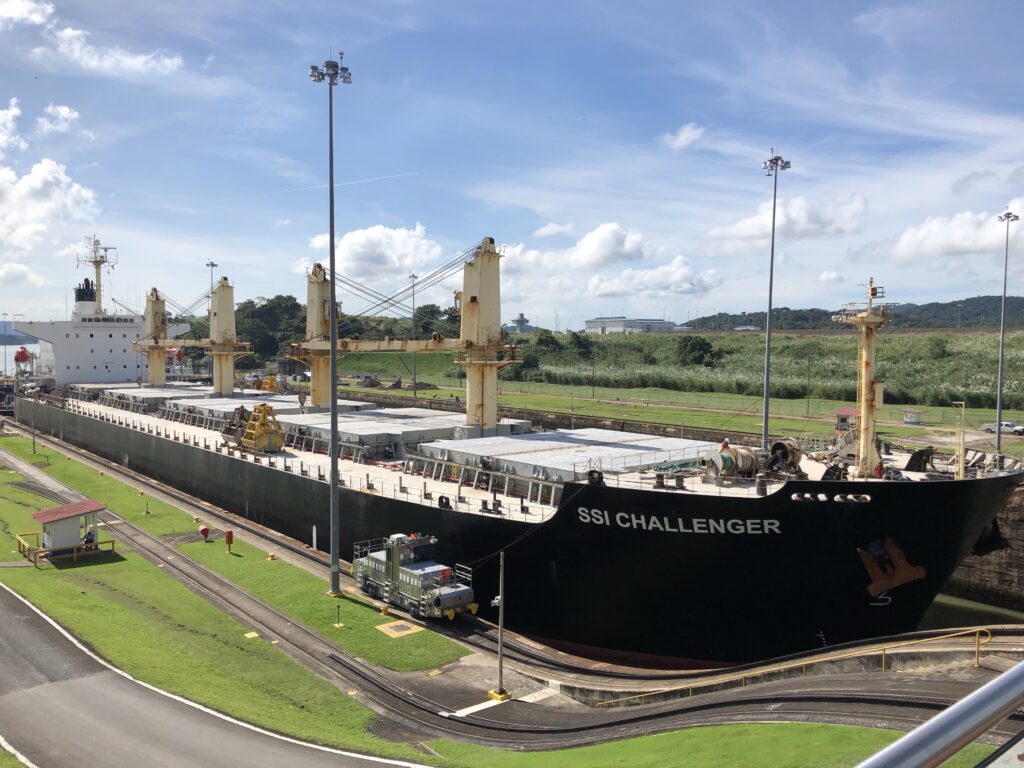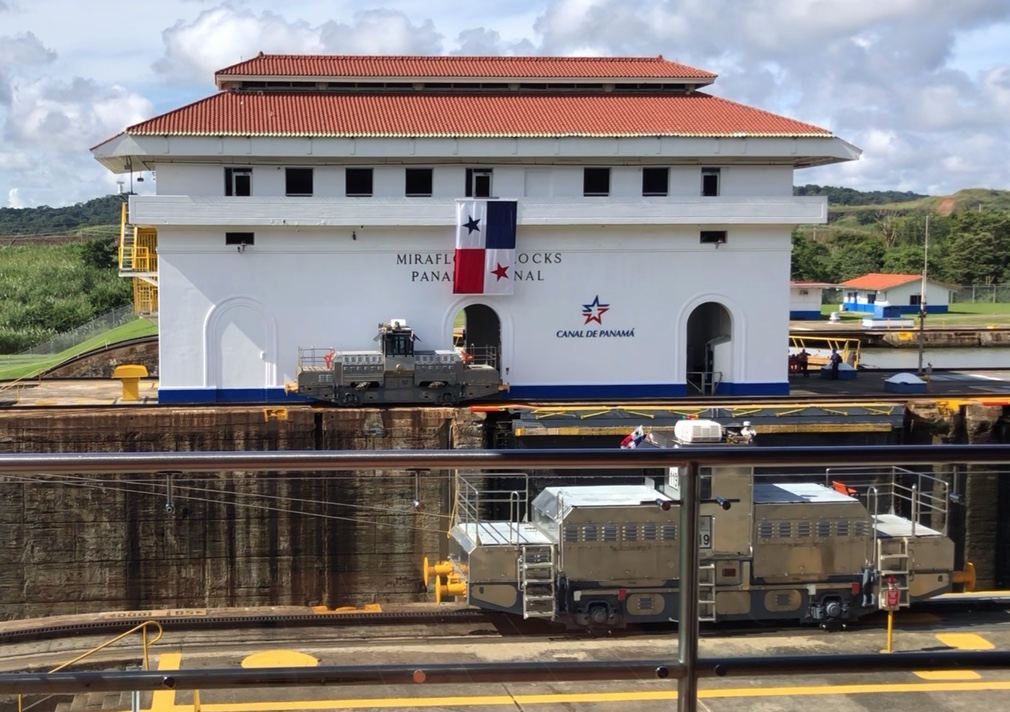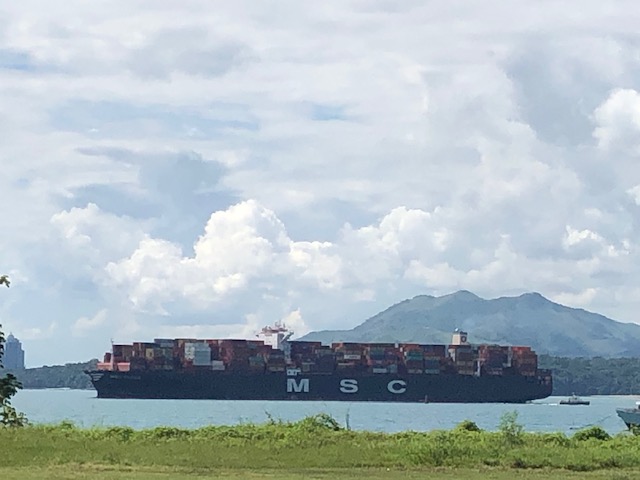The world has many amazing places, natural and man-made. Sites like Yosemite, Victoria Falls, and Denali inspire awe at God’s incredible, artistic creation. The Great Pyramids of Egypt and Mount Rushmore inspire wonder, as you realize the great feats that humans have accomplished.
I’ve been blessed to see some of these places and look forward to visiting the ones that I haven’t seen yet. However, I’m not sure any place on the planet is as awe-inspiring and wonder-inducing for both its natural and manmade characteristics as the Panama Canal. I believe it is the coolest place on earth and will use the rest of this blog to explain why.

Exhibit 1: The sheer chutzpah it took, nearly 500 years ago, to even think about building a canal across fifty miles of nearly impenetrable jungle and a volcanic mountain range. Yet, explorers and engineers and entrepreneurs did think of it. Even though it took several hundred more years for the technology to be developed and put to use, the idea of linking the oceans through human effort is exciting in and of itself.
Exhibit 2: The engineering feat that it is. The Chagres River that flows through Panama is mighty, and canal engineer John Stevens decided in 1905 to use the river’s power rather than fight the river’s power. He dammed it, creating Gatun Lake, which is 27 meters (85 feet) above sea level. The builders installed a series of locks, three on the Pacific side and three on the Caribbean side, which are filled with water from the lake to raise and lower the ships. (As the announcer at the Miraflores Lock Visitor Center reminded us today, sea level is 0.) The Panama Canal is often called the 8th wonder of modern world and is considered by the American Society of Civil Engineers to be “one of the largest and most difficult engineering projects ever undertaken.”

Exhibit 3: The technology developed over 100 years ago, from the concrete walls to the lock gates to the water system that fills the locks, still works as well today as it did when it was first built. That’s one of those “enough said” statements.
Exhibit 4: What the canal actually does. A transit of the canal is about 50 miles and takes around 10 hours. A trip around South America is about 8,000 miles and takes three weeks. As they say, time is money! The canal began operation in August 1914 (the same day WWI began) and in September 2010, the one millionth vessel, the Fortune Plum, went through. That’s a lot of people and a lot—more than 400 million tons each year—of cargo. As I told Bob when we were on our way to Miraflores Locks today, “The whole world comes together at the Panama Canal.”
Exhibit 5: The amount of money, time, blood, sweat, and tears that went into the project. When you consider that 12,000 people died building the 50-mile Panamanian Railway and additional 22,000 died during the French effort to construct the canal in the 1880s, the fact that fewer than 5,000 died in the 10-year, $375-million-dollar American effort to build the canal, doesn’t seem so bad. Still, thousands of families sacrificed, and those efforts should not be forgotten.
Exhibit 6: The scientific advancements that came about during the construction of the canal. Doctors Walter Reed and William Gorgas, the chief sanitary officers for the project, figured out ways to get rid of mosquitos, which they hypothesized carried yellow fever and malaria. Suddenly, workers quit dying. In fact, the areas around the canal are considered yellow fever and malaria free, even today. Along with medical advances, train engineers developed track moving technology. Ship builders created dredge boats that could move tons of earth in hours rather than days. Engineers realized advances in concrete and lock technology. Lots of good stuff that benefited the world came out of the building of the canal.
Exhibit 7: Super cute “mules,” the locomotives that pull the ships through the locks. You just have to see them working, pulling mighty ships through the canal, and hear them tooting their little horns, to understand.

Exhibit 8: A nicely done interpretive center. The four-story museum includes loads of history, geology, ecology, and even a simulator where you can take your try at piloting a ship—the bridge is 12 stories high!—through the Miraflores Locks.
Exhibit 9: The Americans “giving back” the canal to Panama in 1999. I remember as a child in the 1970s, when President Carter signed the treaty, how so many people in the U.S. (especially my dad!) were outraged. It was politically unpopular, but it was absolutely the right thing to do. The U.S. ran the canal kind of as non-profit, taking in only as much money from shipping as it cost to operate and maintain the canal. The Panamanians do not. They make gobs of money off the canal, and they are using it to build better roads and other infrastructure for the country. Yes, there is corruption within the government and some of that money is lining pockets, but overall, ownership of the canal has been good for Panama. The pride the country takes in its ownership is palpable.

Exhibit 10: A concern, with the newly expanded canal which opened in 2016, for the environment. The canal authorities have provided for reforestation in Panama for three times the amount of land that was used for the new locks. Seventy percent of the water in the new locks is recycled, rather than continuously using fresh water as the old locks do. The canal split the continents in an area that is traversed by hundreds of species, so scientists with the Smithsonian and other great organizations work in the area to learn more about these species and see what can be done for conservation. Yay.
Exhibit 11: Ships. REALLY BIG SHIPS. For someone born and raised in the desert, I have an unending fascination with ships. They are mysterious and beautiful. They sail on oceans and get followed by birds and dolphin and whales. They are cool, and about forty go through the Panama Canal each day.

Exhibit 12: Canal pilots. The only place on earth that a ship’s captain, including the U.S. military, gives up command is during a transit of the Panama Canal. He turns over control of the ship to the pilot, who is the only official allowed to talk while the vessel makes its way through the locks. Everyone has to listen to the pilot. Fewer than 250 qualified pilots take more than 14,000 ships through the canal each year. I love this description from the Los Angeles Times, “Imagine you’re behind the wheel of a 50-ton Cadillac three football fields long. The road’s icy, the brakes are mushy, and you’ve got to squeeze into a parking place with a few feet (sometimes less) of clearance on either side.”
Exhibit 13: An IMAX film on the canal and its history narrated by Morgan Freeman. Definitely enough said.
So, there you have it. Thirteen reasons why the Panama Canal is the coolest place on the planet. If you haven’t been or if it’s been a while, come see us while we are living here, and we’ll visit it together.

Love it…Panama should pay you for marketing and bringing in gobs of tourists!
🙂